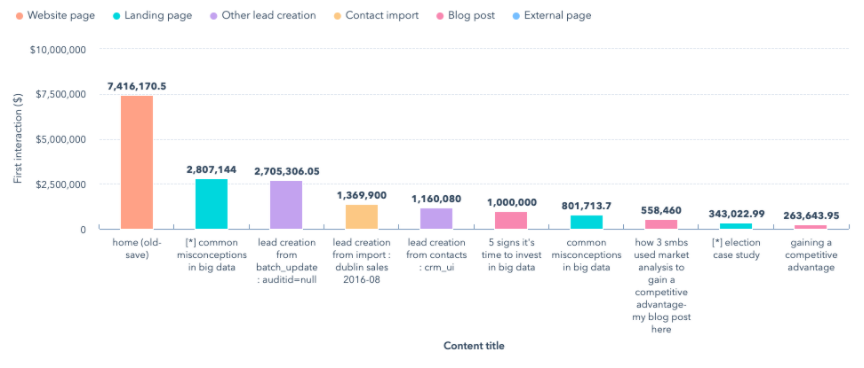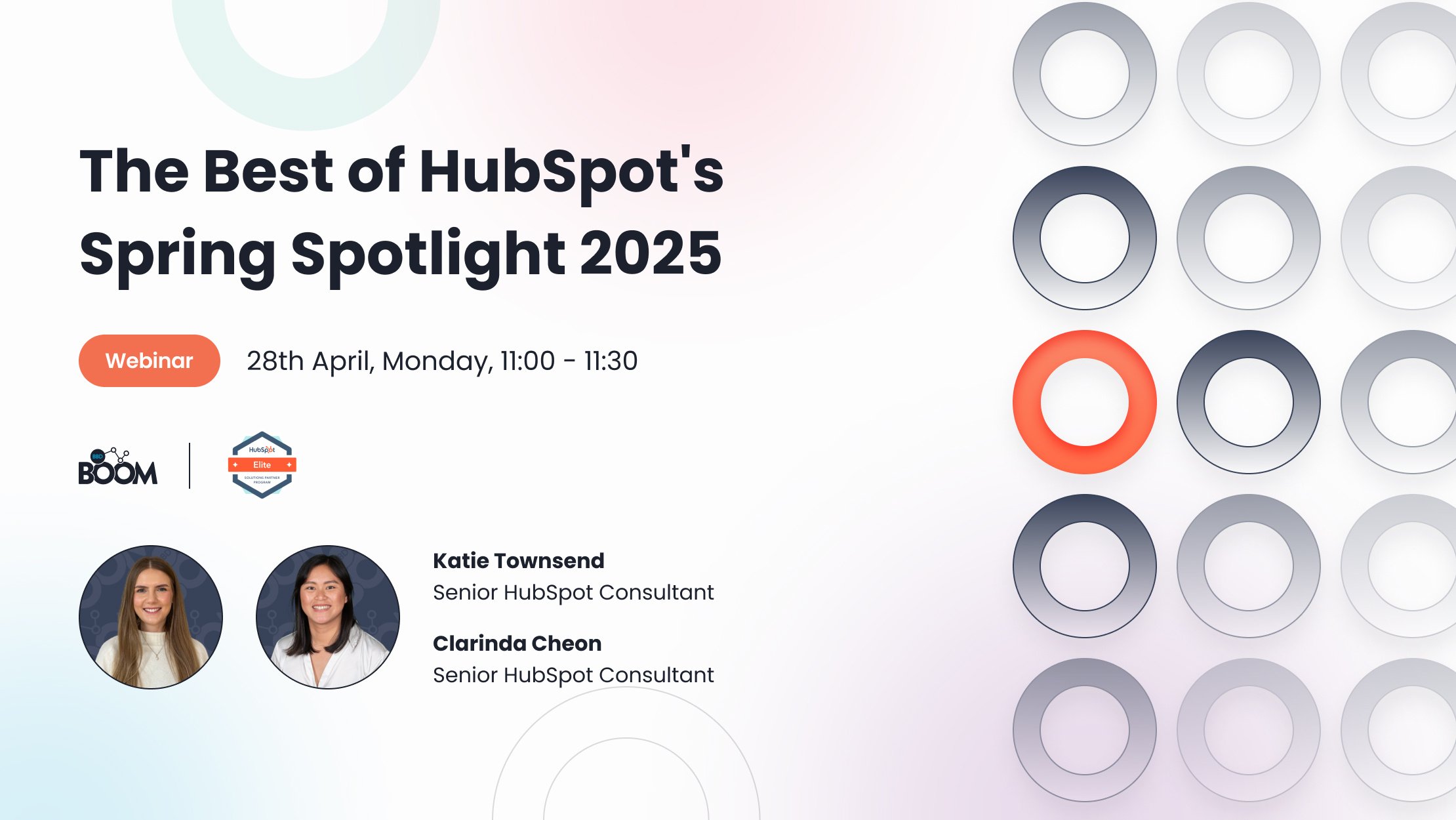We are going through some very uncertain times right now, with a global health crisis and economies everywhere coming to a halt.
In the business world, it is understandable that the drive to save businesses and jobs will lead to cuts or pauses in marketing expenditure. Many businesses will be unsure if it is actually appropriate to be releasing any campaigns when the world is suffering.
But I’m an optimist, and I believe that at some point the economy will recover. No one knows whether this will be a quick bounce back or something longer - but it will happen.
I think the opportunity for marketers is this. For many of us in lock-down we may find ourselves with more time for thinking, reflecting and undertaking overlooked maintenance jobs. Personally, I saved myself over 2 hours of commuting time from working remotely, and my garden has never looked better! I’ve even learned how to do a headstand, but I’ll spare you that visual.
So now is the time to implement some changes to your marketing processes, content and campaigns so you come out leaner and fitter for recovery. Here are 10 marketing activities to do NOW to maximise your recovery.
1. Campaign Review.
In normal times you may find you are so busy executing campaigns that you don’t have time to sit back and properly review their performance. Now is a great time to ask yourself which campaigns have created:
- The most revenue
- The most MQLs
- The lowest CPL
- The most website traffic
- The best engagement with target accounts
Based on the data, where should you invest more/less next time around?
2. Deep clean your CRM.
There aren’t many businesses that can honestly say that their CRM is as clean and tidy as it could be. Now is a great time to sort out your CRM. So how about:
- Delete hard bounce contacts
- If a contact has moved to a new employer - add in their new contact details
- Remove unengaged contacts or run a re-engagement campaign
- Is everyone GDPR compliant?
- Delete fields or forms that are no longer being used
Get stuck in and clean up!
3. Conversion Health Check.
For all of us working with the inbound model, it's really important that we're always measuring conversion paths. This assumes that you have all the right tracking in place for your content downloads, webinar or event registrations and contact requests. Here are some questions to ask yourself:
- Are you tracking all your gated content?
- Are you tracking live chat enquiries?
- Are you tracking phone calls using virtual numbers?
- Are you conversions in your ad platforms accurate?
- Are conversions on their party tools like GotoWebinar sign-ups being tracked in your marketing system?
- Are you using Google Tag Manager to manage tracking tags?
- Do you use Google Tag Manager Preview tool to check they are firing at the right time?
Make sure there are no leaks in your conversion tracking!
4. Stockpile Content.
You can never have too much content for inbound marketing! So with the potential reduction in active campaigns, use spare capacity to create campaigns for when things started to pick up again - maybe more content than ever! Here are some quick fire ideas:
- Break existing content assets into smaller bite-sized ones
- Ask everyone in the business to write one blog
- Plan out a series of videos. Use the time to structure these out, brief people that will be involved ready for when you can all get together for the video shoot
- Update old assets - can you product an ‘New and Updated’ version of content from a few years back
- Come up with new lead magnets (see brainstorm below)
Get busy and get your content ready.
5. Get creative.
Get people together online to throw ideas around. Use the power of Zoom or Google Hangout to bring everyone together to get a new perspective on marketing ideas going forward. Some tips:
- Break your brainstorms down to specific topics or products - make it manageable online
- Make use of breakout rooms to allow smaller group collaboration
- Bring together different functions - get sales, customer success on the call as well
- Ask them to do pre-work before the brainstorm (get them thinking in advance)
- Capture, share and move on. Have clear next steps
Let’s encourage everyone to approach things differently.
6. Market research.
You've got potentially more time to think and have conversations. The same probably goes for some of your customers or prospects, so this is a great time to be doing some market research. Here are some topics:
- What content did you find most useful last year?
- What could we improve our content?
- What pain points can we help address?
- What do you think of our site?
- What is your preferred channel for comms?
- How often do you want to hear from us?
Let’s make sure we come back stronger with deeper insight into what will add value for our audience.
7. Understand your sales team better.
The relationship with sales and marketing is crucial for success. This is a great time to build deeper understanding, empathy and trust between the two teams. Get the teams or maybe the individuals on a series of video calls to uncover:
- How have they found working with you?
- How have your prospects found our marketing output?
- Do we need to improve any marketing processes?
- Does there need to be an SLA like this?
- Can you improve the marketing/sales handoff?
8. Training to grow knowledge.
If you're a HubSpot user, you will know about the absolute wealth of content in the HubSpot Academy. There are lessons that take 20 minutes or full blown certificates that take many hours and include online exams. You don’t need to be a HubSpot user to access this. Start brushing up your skills on a new area of marketing, get excited about the new things that you can bring to your role. Here some of my favourites:
9. HubSpot Audit.
Hubspot is packed full of features. Sometimes it's overwhelming to keep up with all the new product updates. Or you may know about the features but haven’t really had a chance to implement them. We recommend that you have a hard look at your use of HubSpot portal. Have a look at your strengths and weakness across areas such as:
- List Management
- Workflows
- Lead Scoring
- Segmentation of Data
- Lead Nurturing
- Content Strategy
- Integrations
- Landing Pages and Forms
- Social Tool
- Lead Flows
- CTAs
- Reporting and Measurement
If you aren’t sure how to do this, we can do this for you. Find available times to discuss your Free HubSpot Optimisation Audit here.
10. Set-Up Attribution Modelling.
Marketing attribution is a reporting framework that allows marketers (and sales teams if you want!) to demonstrate the impact and value of marketing activity - so linking it to sales. Get this setup so you can answer the following questions:
-
How much revenue did my blogs generate?
-
What other content generates revenue?
-
What channels drove the highest ROI?
-
What is the impact of marketing on sales generated leads?
- How does attribution change by different models?

I hope that's helpful. If you've got any other ideas, please share them with us and we'll add them to the list. Stay safe.

.png)



.jpeg?width=50&name=1573666887630%20(1).jpeg)

.jpeg?width=90&name=1573666887630%20(1).jpeg)


